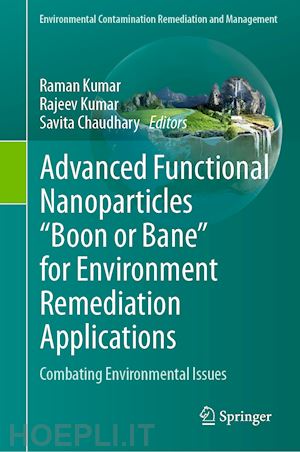
Questo prodotto usufruisce delle SPEDIZIONI GRATIS
selezionando l'opzione Corriere Veloce in fase di ordine.
Pagabile anche con Carta della cultura giovani e del merito, 18App Bonus Cultura e Carta del Docente
This textbook provides an overview of applications of advanced nanomaterials, basic lab set up and requirements in for their synthesis, techniques and career scope of nanotechnology in industries and research.
Pollution of air, water, soil is an ever increasing environmental problem attributed to increasing population, global industrialization and unplanned urbanization, has acquired alarming dimensions. It is the most dangerous and worst problem that puts the lives of people, animals, and plants on the earth in danger. An effective, efficient and sustainable approach for managing pollution related problems requires the utmost attention of the scientific community to tackle this menace for the society to lead a healthy and quality life. A number of techniques and books, literatures have been developed in recent years to treat environmental contaminants. However, most of these are not economically viable, environmentally benign and suffer due to cumbersome multi-step manipulations. The purpose of this textbook is to inform students about the application of functionalized nanoparticles as a new approach to supplement traditional treatment methods in cost and time effective manner. The simplistic means to assemble nanoparticles to the constituents of next generation technologies in environment cleanup and sensing are the main objectives of the book. The toxicological footprinting of released advanced functional nanomaterials in ecosystem will also be discussed in the book.










Il sito utilizza cookie ed altri strumenti di tracciamento che raccolgono informazioni dal dispositivo dell’utente. Oltre ai cookie tecnici ed analitici aggregati, strettamente necessari per il funzionamento di questo sito web, previo consenso dell’utente possono essere installati cookie di profilazione e marketing e cookie dei social media. Cliccando su “Accetto tutti i cookie” saranno attivate tutte le categorie di cookie. Per accettare solo deterninate categorie di cookie, cliccare invece su “Impostazioni cookie”. Chiudendo il banner o continuando a navigare saranno installati solo cookie tecnici. Per maggiori dettagli, consultare la Cookie Policy.